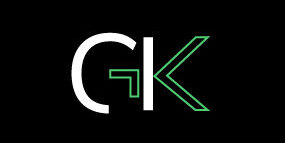Go ahead, sign up. It will show us you’re interested, and we will make it happen.
#6 LinkedIn Digital Mafia
People who (actually) have something to say — and say it — on LinkedIn.
How To Provide A Unique Solution to Your Customer’s Problem
Luke Netti is a freelance web developer and an ex systems engineer at Lockheed Martin.
People care about their needs and want to find answers to their own problems. But the question is, how do you create a unique solution to their problems?
The optimal way to create a unique solution is by first finding a unique reason why the alternatives haven’t worked for the customers. It boils down to having a:
– Unique mechanism of the problem. A reason why the other alternatives didn’t work.
– Unique mechanism of the solution. A reason why your solution is the only one that will address that.
The perfect way to calculate content consumption.
Sam Kuehnle is the VP of demand generation at Refine Labs.
This is a very interesting take.
If we assume that there’s no other goal than to consume the content, this makes a lot of sense.
But if we assume that the goal is to inspire an action after consuming the content, this is unnecessary and just complicates the tracking.
In that case, the best and easiest way to track would be by earnings per click (EPC).
However, if your goal is to calculate content consumption, this is an excellent way to do so.
Why Facebook Ads Are Still #1 in E-commerce.
Nigel Thomas is the CEO of a digital marketing agency called Alpha Inbound.
Facebook ads are still the most valuable advertising channel for e-commerce. And the main reason is the way they place the ads on the search.
You see, Google ads pop up depending on what you search, so people have some intentions for the product already.
On the other hand, Facebook ads will pop up to people’s feed depending on their interests, data on their profiles, and previous activities.
This way of placing your ads helps e-commerce brands discover new products, and it’s mostly why Facebook ads are so powerful.
YouTube ads can have a similar effect. In media buying, it’s called the hollow effect.
The difference between a CRO expert and a scientist
Jonny Longden is the conversion director at Journey Further.
This is a very good point by Jonny. But we also have a counter-argument to make.
We are not scientists. We are business people.
The scientist’s goal is to learn, whereas the company’s goal is to make money.
That is why the language of winning vs. losing in a test is helpful because the ultimate goal is not to learn but to make money.
A lot of people say that the point of CRO is to learn. Yes, learning can be good. If we run a test and learn something new, we can roll it out across the company.
Sounds good in theory, but in practice, how much learning can you afford to make if every ‘losing’ test costs you a lot of money.
For example, imagine that you are testing your main funnel, which is your company’s biggest source of revenue. You do multiple tests in a row, and they all lose. Will the loss of the testing be worth the learning?
Probably not.
So the point we want to make is that learning can be good. But many CROs use this narrative to justify poor success rates (or indulge in navel-gazing, testing to satisfy their own curiosity).
The #1 goal of business is to make money.
